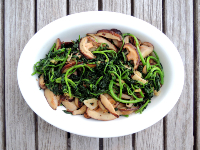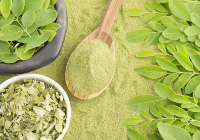May 2020 Edition
What’s New
More than 50 million Americans suffer from allergies each year..
Natural Medicine for Seasonal Allergies

Ah, Spring! We welcome the pleasant weather, the scent of new blossoms, and open our windows to the rush of fresh air. Along with that, we invite in pollen, grass, mold, and spores. For those who are allergic, our bodies launch a major immune response designed to flush out the offensive agents. This can result in illnesses such as allergic rhinitis (hay fever) which is common for all age groups in the United States. Each year, over 50 million Americans suffer from allergies, the sixth leading cause of chronic illness with an annual cost in excess of $18 billion. This does not include the 24 million Americans who have allergic asthma.
When does Allergy Season Begin?
Depending on how warm the winter months were, seasonal allergy symptoms can start as early as February, but typically arise mid-March to April and last throughout summer. The most common plants to trigger allergies are birch and oak, dandelion, ragweed, and grasses.
Symptoms include:
• Sneezing
• Stuffy Nose
• Watery Eyes
• Itching of the nose, eyes, ears, or roof of the mouth
What Drives an Allergy Response?
Allergies occur as your immune system reacts to foreign invaders, producing antibodies that identify particular allergens (e.g., pollens) as harmful. During an “allergy attack,” the immune system reaction can inflame your skin, sinuses, airways or digestive system (as in food allergies). Mast cells – specialized white blood cells found throughout the body (lungs, skin, intestines, and near blood vessels and lymph nodes) – regulate how the immune system responds. Mast cells contain the histamine released into the bloodstream during an allergic reaction, resulting in symptoms such as itching, redness, and dilated blood vessels. When histamine release is excessive, it can cause a severe, life-threatening allergic reaction (anaphylaxis).
Typical allergy treatments aim to relieve symptoms. Prevention of symptoms should begin much sooner than the first sneeze. Early detection and addressing underlying issues can reduce symptoms and sometimes prevent allergies from developing.
Be Proactive. Before symptoms appear, undertake spring cleaning of your home and office. Flush out your system with a seasonal detox: eat lots of fresh organic fruits and veggies, sip Moringa and Green Tea; use supplements suggested by your holistic physician such as quercetin, which helps stabilize histamine production in the body.
Wash Your Hands Often. Clean hands are essential to protecting your health. If you have been outdoors, don’t touch your eyes, and clean your hands as soon as possible.
Change and Wash Clothes and Bedding. Keep pollen and other triggers out of your home. Remove clothing when you come in from outdoors and wash on an allergen cycle, if available on your machine. Shower immediately to remove pollen from your hair and skin. Change bedding at least weekly.
Change Air Filters. In your home or workspace, use a high-quality HEPA air filter and change the filters seasonally, perhaps even monthly during peak pollen times.
Heal the Gut. Leaky gut has been linked to increased seasonal allergies.
• Drink plenty of water
• Keep home and car windows closed during peak season
• Avoid being outdoors during peak pollen times in your geographic area (check daily weather reports for what is peaking–type of pollen, mold, etc.
• Wear a high-rated filter mask when mowing the lawn or working outdoors
• Consider buying a home air purifier designed to address allergens
• Periodically wash the nasal cavities using a Neti Pot or saline nasal spray.
Click the link to get the NETIPOT that Dr. Samm recommends: https://amzn.to/3bVo6oG
For more personalized recommendations for prevention and management of allergy symptoms, please consult Dr. Samm Pryce.
Food for Thought. . .
“Spring adds new life and new beauty to all that is.” – Jessica Harrelson
Wonderful Watercress

Watercress (Nasturtium officinale) is a nutrient dense, cruciferous vegetable with a tangy, peppery taste. Some of the nutrients found in watercress are vitamin A (from beta-carotene), vitamin B6, vitamin C, folate, iodine, calcium, and iron. It’s also a source of several phytochemicals that support the plant’s health and metabolism and are beneficial to human health, including blocking allergic responses.
One study of particular interest, shows that the phytochemicals in watercress inhibit 60% of histamines released from mast cells. That’s amazing news for anyone seeking allergy relief. As we’ve discussed, mast cells are types of white blood cells within the immune and neuroimmune systems. Mast cells are involved in allergies and anaphylactic reactions and play an important role in wound healing, immunity, and other physiological functions. While many vegetables contain compounds that help lower histamines and support immunities, several of the phytochemicals in watercress actually block histamine release and that helps keep the immune system from going into overdrive.
Though common to the U.S., watercress is challenging to grow because of the unique circumstances required for cultivation. In the wild, watercress grows on the edge of rivers and streams. As an edible crop, it’s grown in shallow spring water beds. Watercress is sold as a fresh salad vegetable, both by itself or mixed with other salad leaves, and is readily available from greengrocers and supermarkets. Watercress is very versatile and can be enjoyed raw, in soup, or added to a stir-fry, sauce, pizza and fish dishes.
Watercress with Sauteed Ginger and Shiitake Mushrooms

Spring into the season with this zesty and healthy dish. Watercress is one of the beautiful greens you’ll see in the supermarket or farmer’s market. With its exotic leaves and zesty flavor, watercress is ideally suited for sauteing. Because the flavor is strong (unlike spinach, which is mild), it’s best to pair watercress with other strong flavors such as ginger, garlic, green onion and sesame oil, making it the perfect addition to a stir-fry recipe.
Ingredients
• 2 TB Sunflower Oil *see alternate option
• 1 inch piece fresh ginger, grated
• 2 garlic cloves, grated
• 8 ounces shiitake mushrooms, stems removed, sliced into thick matchsticks
• 1 bunch watercress, trimmed and chopped roughly
• 1 TB toasted sesame seeds
Preparation
- Heat the oil over low-medium heat; cook garlic and ginger until fragrant.
- Increase the heat to medium, add the shiitake mushrooms and cook for 4 minutes. Add the watercress and saute another 2-3 minutes.
- While the watercress is finishing, toast sesame seeds in the toaster oven on a foil lined pan for 1 minute. Sprinkle the seeds on the saute to finish.
Serve with brown rice and your favorite protein source.
Recipe Options
*Instead of 2 TB Sunflower Oil, you can use 1 TB Sunflower Oil + 1 TB Sesame Seed Oil
Powerful Procyanidin Eases Allergy Symptoms

Allergy sufferers suffer. And they are always on the lookout for something safe and effective to relieve – and even prevent – symptoms. Most of us are aware that antioxidants are critical to protecting our cells from oxidative stress, a key factor in the development of many health conditions, including allergies. One very powerful antioxidant, procyanidin, is found in a plant called French maritime pine bark, as well in other fruits, including apples, grape seed, and foods such as peanut skin.
Procyanidin has been widely researched for preventing or treating a variety of chronic health conditions including asthma, allergic conjunctivitis, dermatitis, and inflammation of the respiratory airways due to infection. Research shows that procyanidin can inhibit the release of histamines from mast cells. Taking this antioxidant in advance of (and during) the allergy season may help reduce severity of symptoms, particularly for people with allergies to plants and trees in the birch family.
Procyanidin has been found to be safe for use in adults as well as children, for short term use. It should not be used by women who are pregnant or nursing except under the care of a physician. If you are interested in learning how procyanidin can help with your health concerns, be sure to consult Dr. Samm Pryce
Magnificent Moringa to Support Respiratory Health

While Moringa is a superfood known to treat malnutrition in various cultures, it’s greatest impact is on respiratory health. A study has shown that the leaves and pods from the moringa tree (Moringa oleifera) inhibit 72% of all histamines released, making it almost as effective as the drug Ketoifen. It is also used in topical applications to treat inflammation of the skin such as in atopic dermatitis. But what is moringa and how can you make it a part of your healthy diet?
Found mostly in tropical regions of India and Africa, moringa contains proteins, vitamins, and minerals. It is also rich in plant compounds that work as antioxidants, which help protect our cells from damage. Other plant compounds found in Moringa have an action which may help ease the bronchial constriction and respiratory distress associated with asthma.
Since most of us aren’t going to find a moringa tree growing in the local forest, we have to acquire this superfood from a supplement, usually in powder, capsule, or tea form. These supplements can be derived from the leaves, stem, and seeds (also a food source in many countries). For general health, a cup or two of moringa tea is a delicious way to start or end the day. The tea has a mild sweet nutty flavor. Dr. Samm Pryce can help you determine the best form and dose of moringa to address specific health concerns.
No Magic Required: Alleviate Congestion with Warming Socks

Who would ever guess that a pair of insulated, wet socks could help alleviate congestion from your head and stimulate the immune system? Sounds a bit like a storyline in a Disney movie, right?
A natural remedy that has been used by healers for centuries, it’s a fast-acting approach to reduce, or even arrest, congestion associated with mild colds, flu and allergies. It works for children and adults. Here’s how:
A pair of thin, wet cotton socks are covered (insulated) by a pair of heavy, dry wool or fleece socks. That’s right: you have to put on wet socks! Throughout the night, our body will bring warm blood to the feet, creating a pumping mechanism in the blood vessels that stimulates circulation and promotes release of congestion in the head and upper respiratory passages. In turn, this invigorates the immune system to fend off acute illness. By morning, the socks will be completely dry. And you should feel less congested.
Make a Pair of Warming Wet Socks
- Before bed, wet a pair of thin, cotton anklets in a bowl of ice cold water.*.
- Wring out excess water and place on the feet.
- Pull a pair of heavy wool socks (at least 60% wool, 100% wool best) over the anklets and climb into bed.
- Cover well; sleep all night with the socks on.
*Optional Step– If you are feeling very cold, take a very warm shower before Step 1.
For best results, repeat treatment for three nights in a row or as instructed by Dr. Samm Pryce.
Guiding Principles







